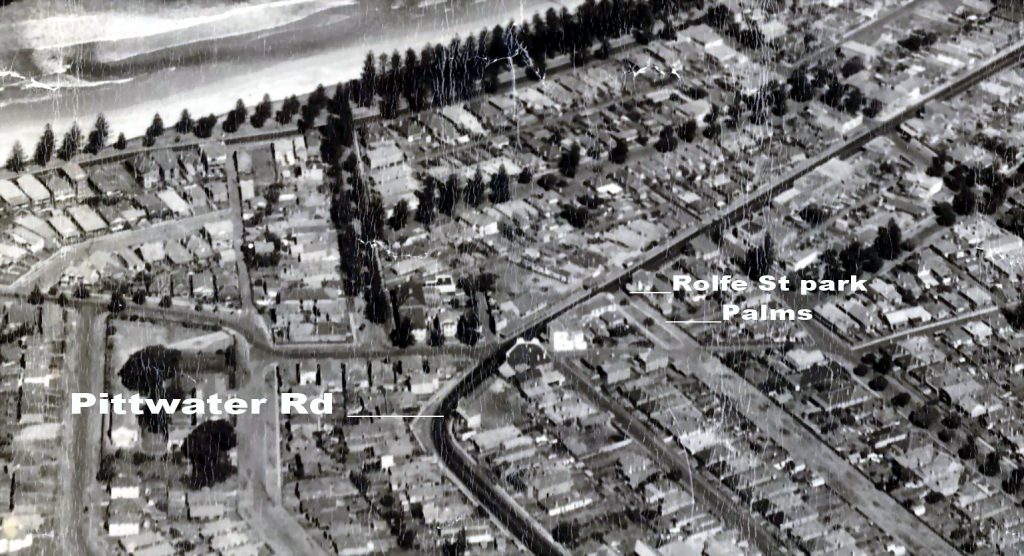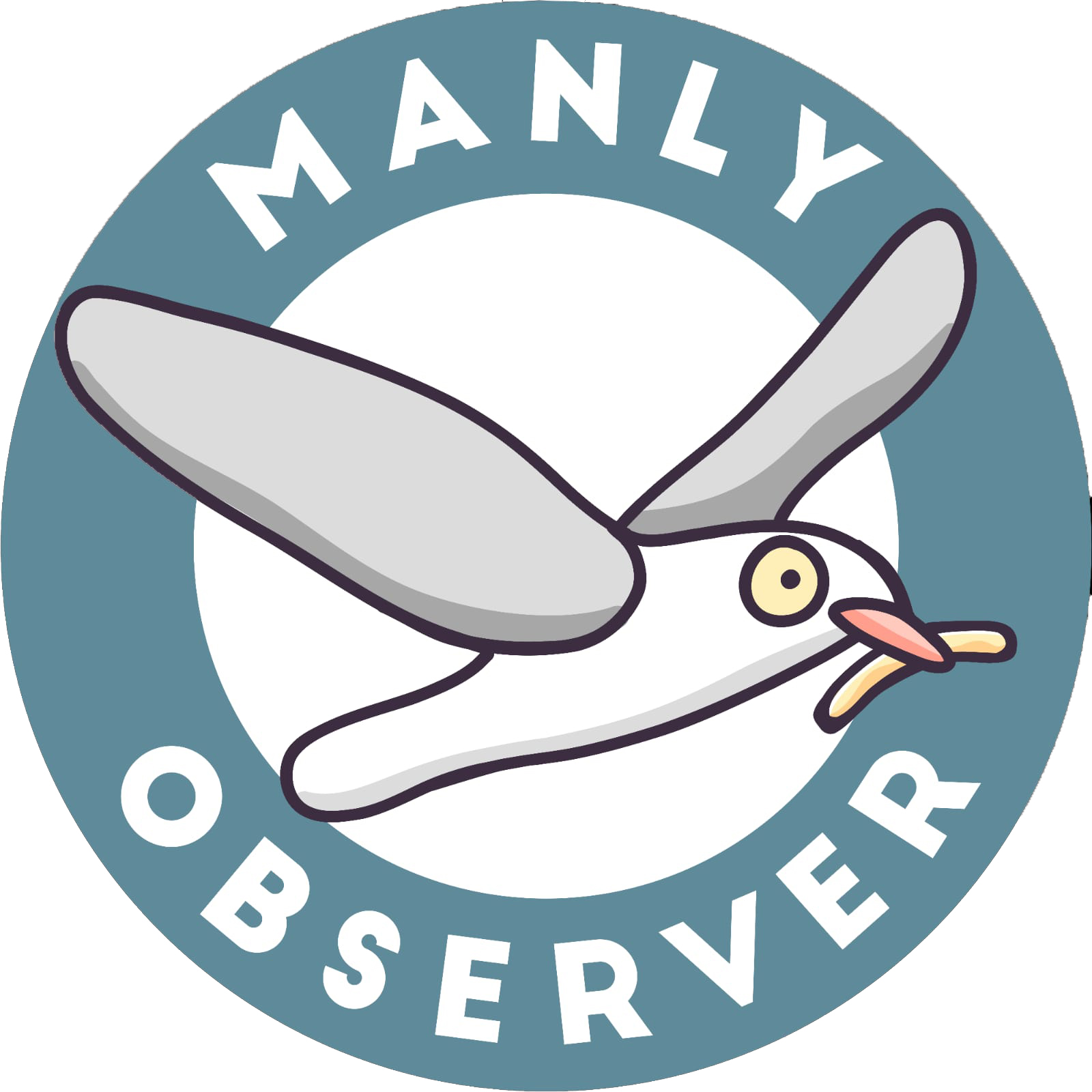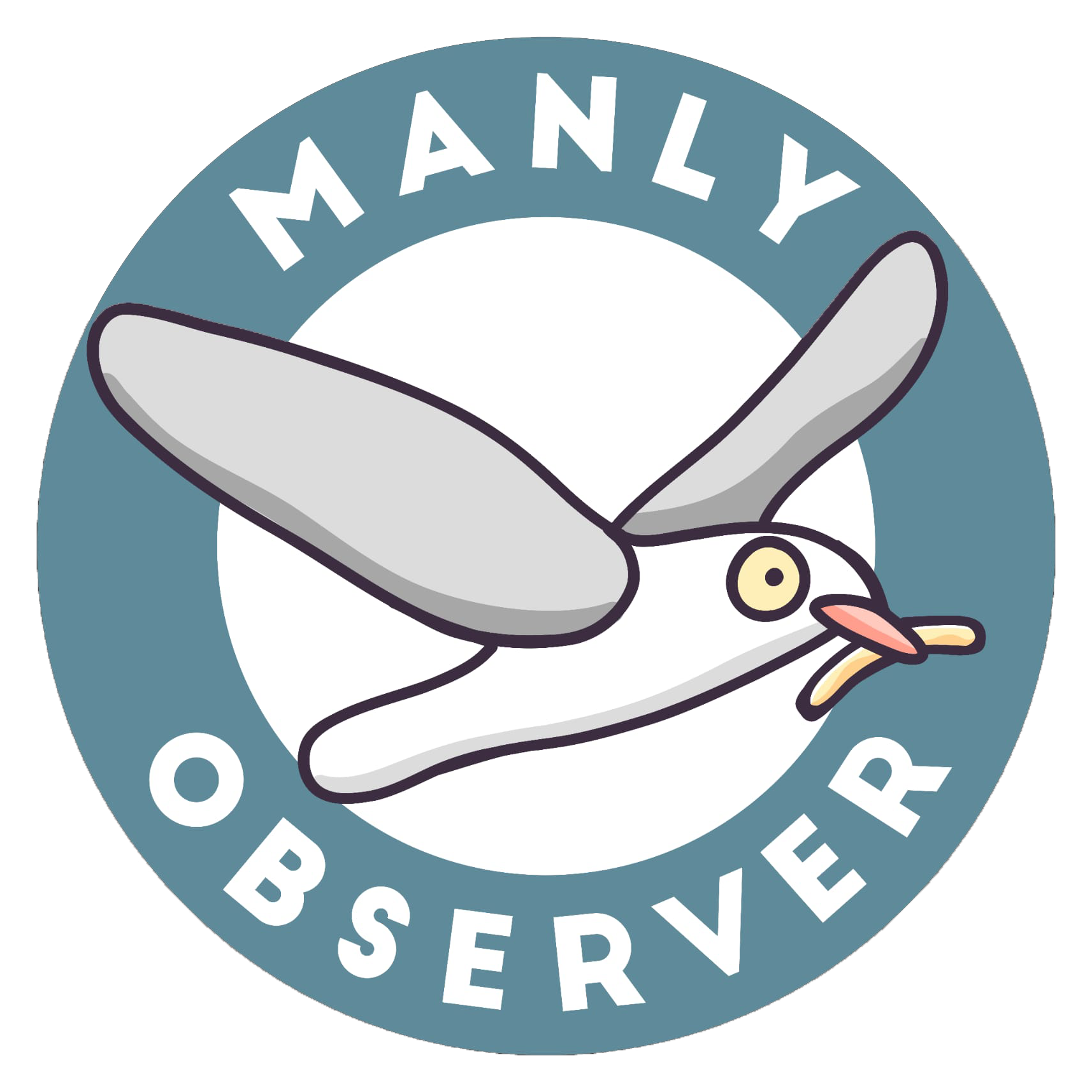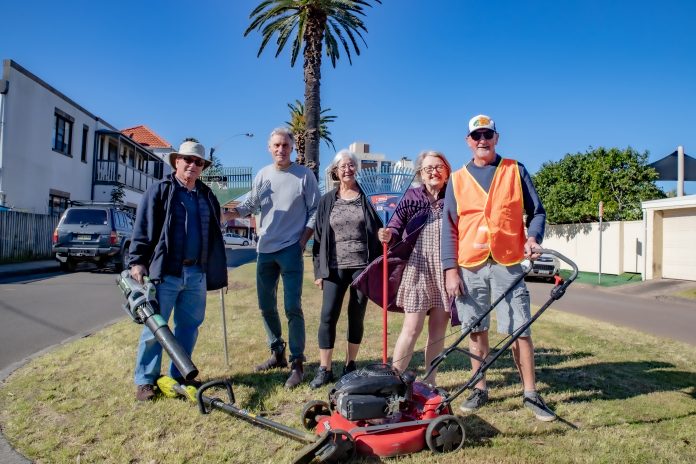A group of Manly residents have taken to improving their neighbourhood with lawnmowers and gardening implements, trimming verges and removing rubbish.
Recently this included the commemorative park on Rolfe Street, a rectangular traffic island approximately 30 metres in length and six metres wide at its western end, between Pittwater Road and Collingwood Street, Manly.
The un-named grassy reserve, which is known unofficially as Rolfe St Park or Two Palms Park, is almost featureless, apart from two large palm trees and a single bench. However, not many people are aware the park was created by a returned Digger after WWII.
Manly resident Peter Barr, one of the neighbourhood volunteers who tidied up the neglected island, explained why the team came together in a working bee.
“On Friday 27th May, a group of local residents decided it was time to take back our unkempt streetscapes – in this case, the commemorative park at the Pittwater end of Rolfe St,” he told Manly Observer. “Starting with two people it quickly increased to four locals happy to chip in with mowing, edging and rubbish removal, untouched for four years.”
What needed to be done?
“Removal of undergrowth covering utilities’ services. Lawns recovered from weed and mowed, edges trimmed. Shopping trolleys removed. We cleaned the bench (but it still needs a paint). Removal of bitumen and gravel from gutters..
“Residents became tired of the park being used as a parking lot, which Northern Beaches Council continues to benefit from parking fines revenue. It’s so wonderful to see it returning to its past glory!”
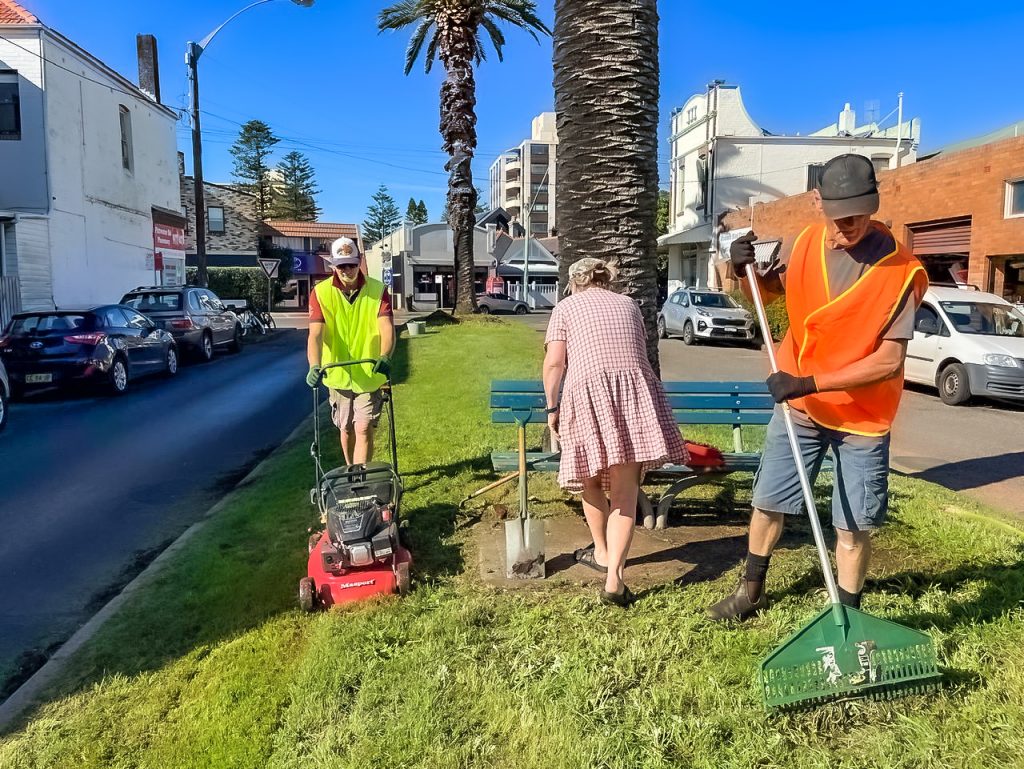
Military origins
What is the historical military connection to the grassy island?
“The small park (and its two distinctive Canary Palms) was designated a conservation area in 1947 and a Heritage Site in Manly Council’s LEP [Local Environment Plan] in 2013,” he revealed.
“This was due to the palms being originally planted from seeds by a local returned North Africa campaign AIF [Australian Imperial Force] veteran in 1944.”
Do authorities have any knowledge of the name of the returned serviceman who created it and planted the two palm tree seeds?
“Unfortunately the heritage inventory sheet does not have any historical information, apart from the fact it has been in its current configuration since at least 1943,” he said. “No authority I’ve contacted can support the returned AIF soldier history.
“The elderly lady, resident of [neighbouring] Golf St, who related the history in 1998 as she remembered it, has since passed. She was adamant he fought at El Alamein.”
Peter told Manly Observer about his campaign to nominate the park for NSW Heritage’s newly instituted blue plaque awards that commemorate influential people from the past.
“In 2021 the park was put up for a historic ‘blue plaque’ program site but no luck to date.”
NSW Heritage recently announced their intention to honour Duke Kahanamoku, Hawaiian surfing legend who popularised surfing in Australia at Freshwater, Manly and Dee Why beaches in the summer of 1914-15. Duke’s blue plaque, to be installed near Freshwater Surf Life Saving Club, is one of the first in the state-wide scheme, but hundreds of other nominations are being considered, including Sydney’s Northern Beaches.
Are there plans afoot to give the park an official name and, if so, is the proposal it be named after the soldier who planted the palm trees, when his name is eventually learned (important if a blue plaque is ever awarded)?
“No naming organised yet, but it absolutely should be named after the returned soldier,” Peter affirmed.
Meanwhile, the clean-up crew are asking if Council can add another bench to the reserve, to welcome passers-by to utilise the calming island to read or relax.
“[Fellow volunteer] Michelle’s husband Kim tragically died from work-related mesothelioma several years back,” Peter revealed. “She would like a dedicated plaque on a bench.”
The volunteer crew are also seeking a community bursary from the Australian Government Department of Veterans’ Affairs under the Saluting Their Service Commemorative Grants Program to upgrade and enhance the memorial island.
According to the program: “Grants up to a maximum of $10,000 are available for community-based commemorative projects and activities. This includes, for example, the building of community memorials and the preservation of wartime memorabilia that is significant locally but is not necessarily nationally significant.”
If anyone would like to join the team to do some voluntary street and park community renovations, of if historians have information on the returned soldier who planted the palms and established the Rolfe St Park, contact shellbell.stewart@gmail.com
